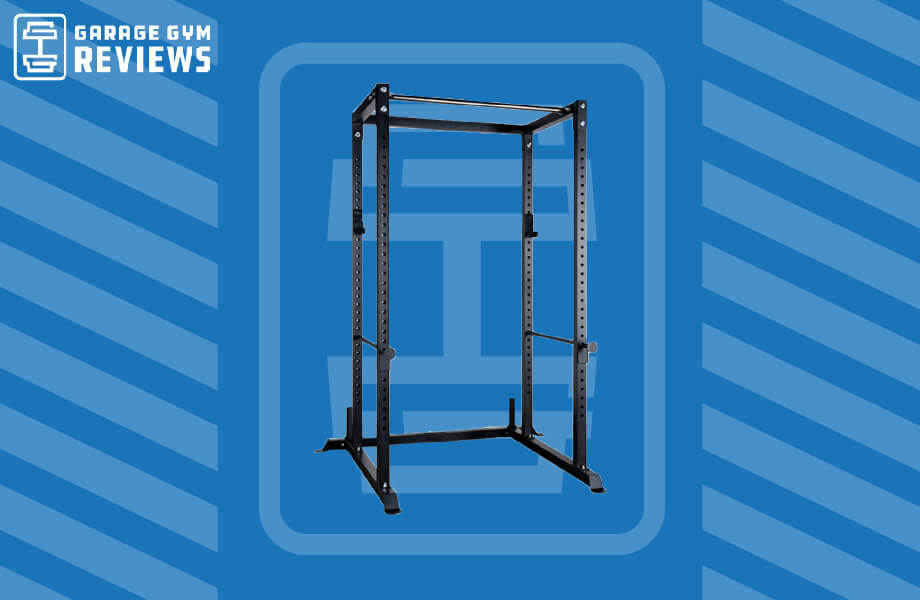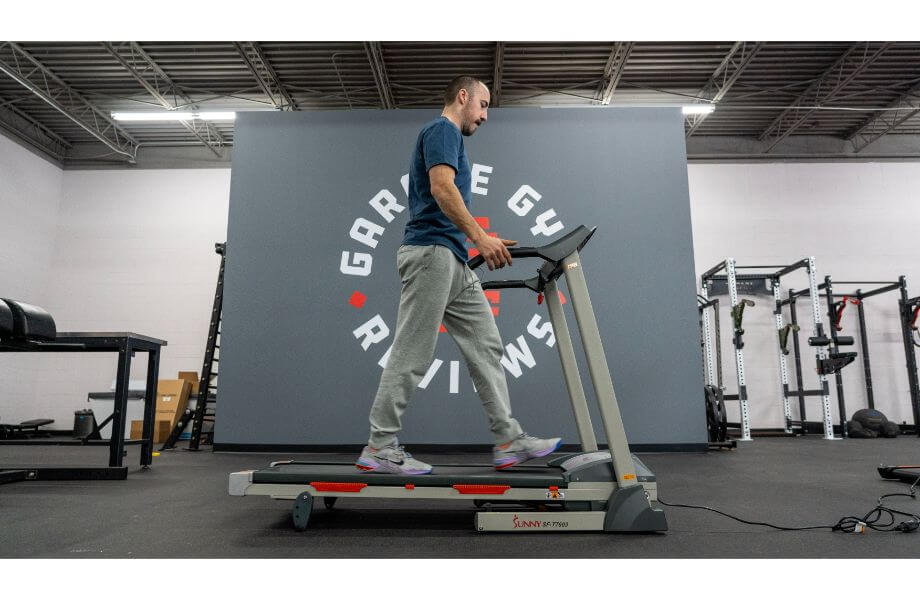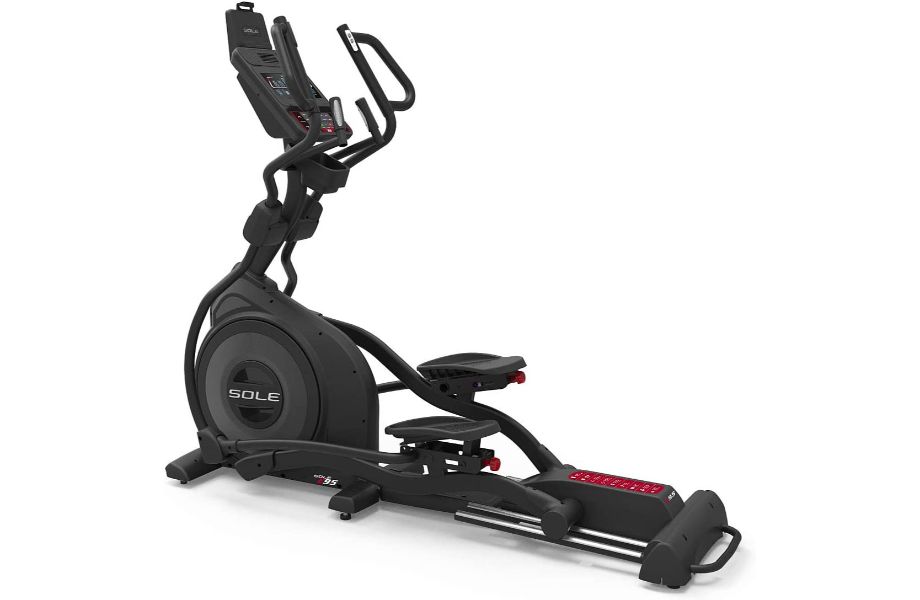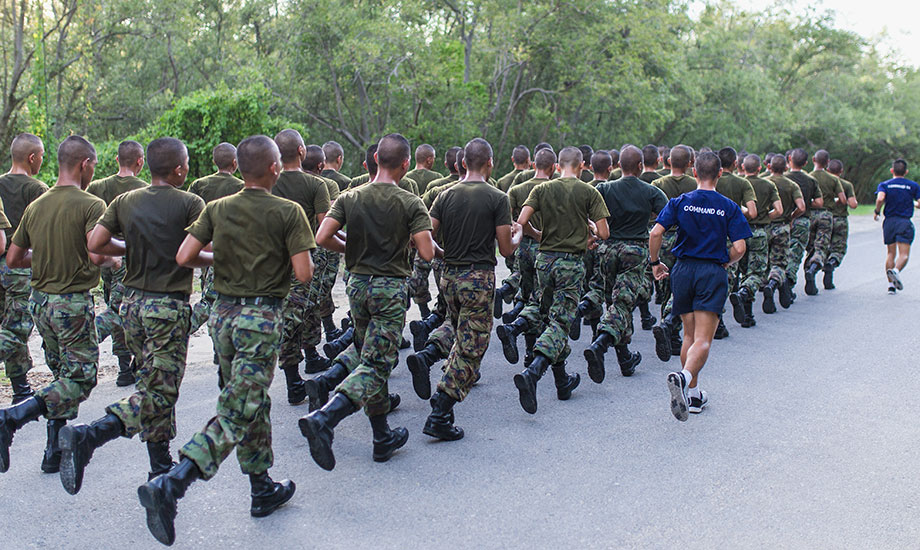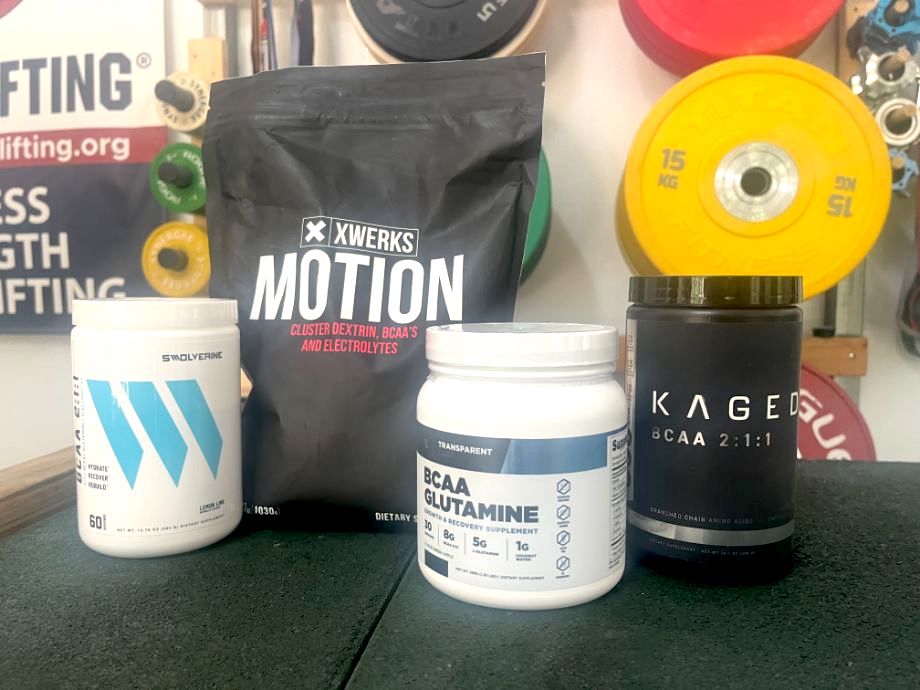Pros, Cons, and Differences Between the Full Rack and Half Rack
The squat rack is one of the most fundamental pieces of fitness equipment in the gym. From one convenient station, a lifter is capable of completing a wide variety of barbell exercises, including the back squat, front squat, bench press, and more.
For powerlifters, bodybuilders, and other folks who predominantly perform strength training, the squat rack is often the cornerstone of the gym.
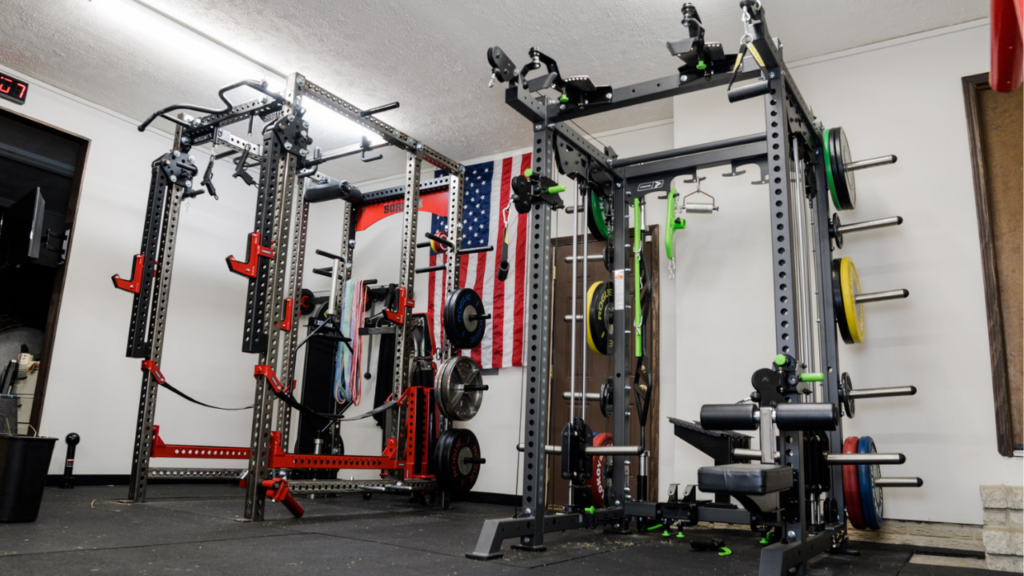
Home gym owners looking to purchase one will have to answer one question before virtually swiping their credit cards—full rack or half rack?
The answer might be clear if we’re talking about barbecue ribs, but would-be squat rack owners must really dissect the “full rack vs half rack” conundrum to arrive at what will work best for their purposes.
Lucky for you, we’ve already done all the heavy lifting on this topic. Let’s break down this classic quandary and see if we can come up with the right solution for you!
What is a Full Rack?
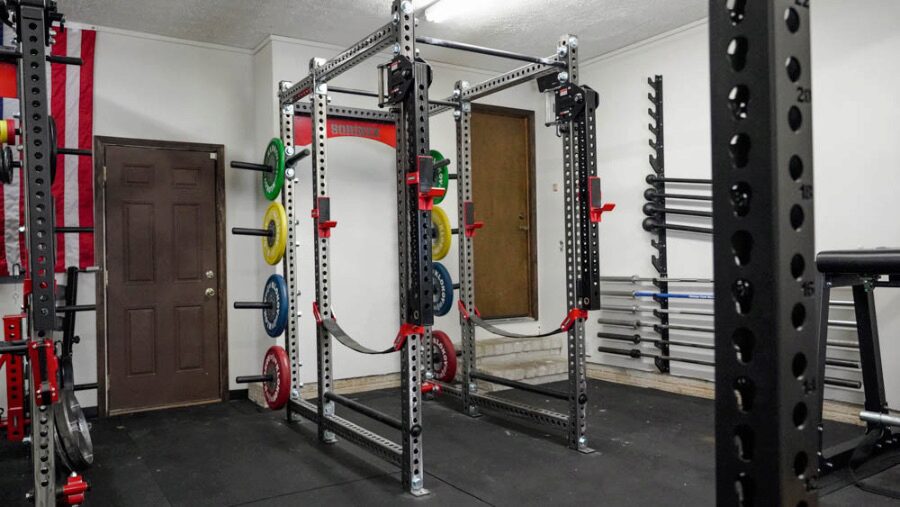
A full rack, also referred to as a “power rack” or “power cage,” contains four heavy-gauge steel upright posts connected at the base, at various places along its length, and once more at the apex of the posts. Because of its cage-like construction, a full rack is one of the most sturdy pieces of equipment available for heavy lifting.
In addition, a full rack incorporates a number of safety measures which allow lifters to work without a spotter present. So long as you lift within the cage, there will be safety measures to catch the barbell whether you fall forward or backward.
A full rack is often the cornerstone of a commercial gym’s equipment, as well as an integral tool for a comprehensive strength building regimen.
What is a Half Rack?
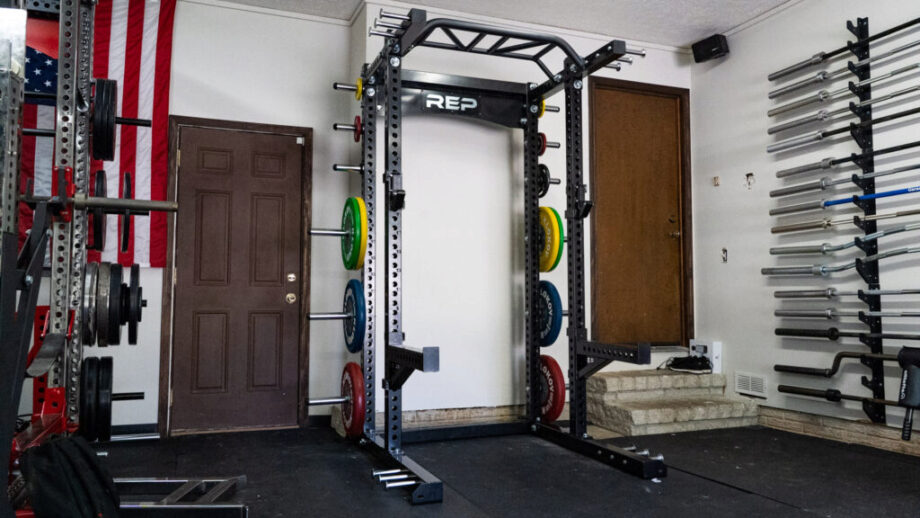
A half rack is a concise alternative to the full rack. Instead of four uprights, the half rack uses two uprights, also bound at the base, to hold a barbell before and after lifts.
Like a squat stand, it takes up considerably less space than a full power rack. Unlike a squat stand, however, it extends upward and incorporates a pull-up bar as well, adding versatility and sturdiness to the build.
Some half racks even include an additional set of short uprights behind the main frame of the rack, adding in some degree of safety for lifters that have no safety spotter available to assist. It’s less comprehensive than a full rack, but offers some peace of mind during challenging strength training.
Related: Squat Stand Vs Power Rack: Which To Buy For Your Home Gym
Full Rack: Pros and Cons
Pros:
- Durable
- Versatile
- Safe
Durable
Typically made from heavy-gauge steel, a well-made full rack is one incredibly durable piece of gym equipment. Because of the four upright construction and the sheer weight of the rack, it can accommodate a much higher weight capacity and help promote confidence during your weight training.
After all, you’re not going to be in the right mindset during your lift if you’re worried that the barbell will tip or topple the rack when you set it back down on the j-cups. And when you’re lifting heavy and pushing for personal bests, you can’t afford to be distracted!

Versatile
Unlike squat stands and half racks, full racks allow for you to tack on loads of extras and add-ons.Possibilities include: pegs to store your weight plates, extra bars that allow you to perform rack pulls and deadlifts, and even pulley systems that allow for you to do lat pulldowns and other cable-type exercises.
A full rack gives you a much larger degree of customization that half racks simply cannot provide.
Related: The Ultimate Guide To Power Rack Attachments (2024)
Safe
Safety always should come first, but it’s not realistic to expect a spotter around every time you lift, particularly if you workout from home. Whether you’re riding solo at the commercial gym or banging out a few sets from your home gym, you’ll want a guarantee you’ll be okay if something goes wrong.
Full racks provide some peace of mind in that regard, because they incorporate a number of safety features. From within the four vertical posts, a lifter is able to fall forward or backward and the safety bars will still catch the barbell.
Even from outside the squat cage, there are after attachable safety arms that will catch the barbell there too. Virtually anywhere you stand in or around a full rack, there is some safety measure available as a failsafe.
Related: The Most Comprehensive Guide To Squat Rack Safety Ever
Cons:
- Bulky
- Restrictive
- Expensive
Bulky
Commercial gyms require a massive floor plan to accommodate all the essential fitness equipment, but your garage gym might not have as much open space to offer.
For folks who need to cram a lot of home gym equipment into a relatively small space, a full rack is often too bulky to be a realistic option. In some cases, it may not fit at all.
Restrictive
Because a full rack contains four uprights, you are well-protected when working within the cage. However, being contained by four vertical posts that feature horizontal bars at different heights, including the four where the rack terminates overhead, is inherently restrictive.
For taller lifters, overhead presses could be impossible inside the rack. In addition, Olympic lifts like the clean, jerk, or snatch that require uninhibited movement and clearance overhead may also be difficult or impossible to perform from inside the rack.
Expensive
Full racks are expensive.
Compared to a half rack, manufacturers ostensibly need double the materials to create this heavy-duty colossus of a rack. Those material costs are rolled into the price tag, of course, making an inherently more expensive rack.
But it doesn’t stop there. Thanks to the extra size and weight, you should expect to pay more in shipping costs as well since it’s a more cumbersome parcel for a freighter to deliver.
Half Racks: Pros and Cons

Pros:
- Compact
- Less Restrictive
- Affordable
Compact
The full rack is the most comprehensive type of rack, but it’s not realistic for every home gym setup. Folks who don’t have the extra square footage to spare need something to fit in a tight space but still offers great bang for their buck.
That’s what makes the half rack truly shine.
A half rack offers a similar experience as a full rack but requires virtually half the space. It’s way easier to cram one into tight quarters, allowing lifters to perform a wide variety of barbell exercises without eating up as much square footage.
Related: The Best Compact Exercise Equipment For Small Spaces (2024)
Less Restrictive
The half rack offers a happy medium between a power rack and a squat stand for folks who prefer lifting outside the cage.
This is especially great for CrossFit WODs which might require a heavy set of squats followed by walking lunges, push-ups, and chin-ups. Since there’s no cage to contain you, the transition is much more seamless when those seconds count most.
Plus, they don’t box you in with a series of horizontal bars overhead, so you don’t have to move to avoid clanging into anything during an overhead press. Simply remove the barbell from the j-hooks and push it high. It’s as easy as that.
More Affordable
Sure, you could find exceptions to the rule. A cheaply made full rack might undercut the “crème de la crème” of half racks. Generally speaking, however, half racks cost less.
If comparing a half rack and full rack of equal quality, the half rack will cost less.
For one, it’s made from less material. In addition, it’s lighter and more compact, so shipping costs are lower too. If price is your deciding factor, the half rack is the clear winner.
Related: How Much Does A Home Gym Actually Cost In 2024?
Cons:
- Lighter
- Less Versatile
- Fewer Safety Features
Lighter
The fact that the half rack is light might sound like a plus, but it’s more often a detriment. This rings especially true if you’re into powerlifting, heavy weightlifting, or simply love to push your limits.
While the full rack will reliably hold up as you rack more and more plates on the barbell, half racks will eventually wobble and could risk tipping if they’re not anchored to the floor.
Plus, the shakiness of a smaller, lighter squat rack could affect you mentally during the lift, distracting you when you need the focus most. For lifting heavy weights, the full rack gets preference.
Less Versatile
Since there are four vertical posts on a full rack, there’s more you can attach and more you can do. Pegs for plate storage are an option. Pulleys for lat pulldowns are possible too. Power racks offer all sorts of bells and whistles for the avid fitness enthusiast.
Half racks, on the other hand, may accommodate some attachments, but you’ll get nowhere near as much customization as you would from a full rack.
Fewer Safety Features
The most basic half racks might not include spotter arms to catch the barbell and, since there is no cage where horizontal bars act as a failsafe, there’s nowhere to bail your barbell except the floor.
Some half racks allow for attaching safety arms. A few half racks might even include a separate set of shorter uprights that provide a place to drop the barbell in the event of a failed lift.
In general, however, the full rack is a safer option for lifters who have no spotters available.
Full Rack vs Half Rack: Key Differences and Similarities
Both full racks and half racks are squat racks that allow you to perform a variety of barbell exercises, but what are the key differences?
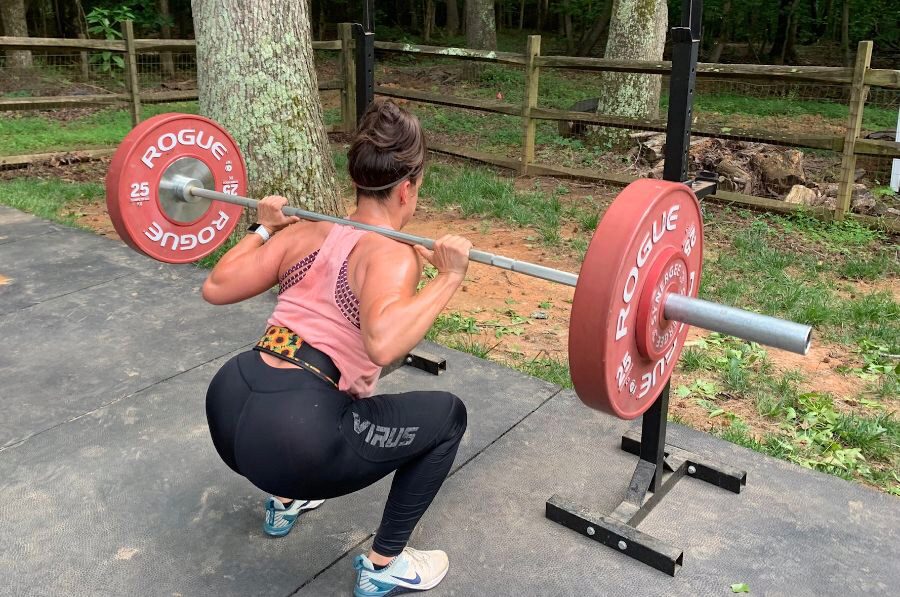
Size and Space
As the name suggests, a half rack is literally half of a full rack. The half rack contains two posts (and sometimes two additional half-posts) while the full rack has four full uprights and creates a cage-like enclosure for the lifter.
Since the half rack doesn’t create a box, it has a much smaller profile and occupies roughly half the space of a full rack. This is crucial for those looking to squeeze as much equipment into a relatively small space as possible.
Weight
Full racks are a heavy-duty apparatus and so, by that token, they are inherently heavy. This is fantastic for when you have a lot of weight plates on your barbell and you’re looking to push your one-rep max. You’ll be able to keep focused on the lift because you know the rack will stay sturdy under the immense weight.
Half racks are lighter, and so they start to wiggle and wobble as you start racking more and more weight. For lifters who work with heavy weights, powerlifters, bodybuilders, and other dedicated strength training aficionados, the half rack may not work unless it is anchored to the floor. (On that note, though, we recommend bolting all types of squat racks for ultimate safety.)
Cost
Some folks will make do with just about anything for the right price. For price-focused fitness enthusiasts, the half rack will almost always undercut the full rack in terms of price.
If you feel you will be able to perform a comprehensive regimen with the half rack, you will save money by selecting it over the full rack.
Related: The 10 Most Important Budget Home Gym Tips
Full Rack vs Half Rack: Final Thoughts
Both types of rack offer incredible value, but it ultimately comes down to your personal situation and your goals.
If you have space to spare, money to burn, and you’re predominantly lifting very heavy weights, the full rack is the most comprehensive option and will likely provide you with the best value.
If you only have a small amount of space to spare, you’re watching your wallet, or you lift a moderate amount of weight to keep fit, a half rack should do the job just fine.
No matter which rack you choose, you will enjoy a great piece of equipment that provides value to every strength-focused workout you complete thereafter. Overall, buying a rack, full or half, is an excellent choice for any home gym owner.
FAQs: Full Rack vs Half Rack
Where can I buy a squat rack?
Sports supply stores, specialty retailers, and gym equipment retailers often sell a few options for both full racks and half racks if you prefer shopping brick-and-mortar locations.
For the best selection, however, shopping online reigns supreme. Amazon offers some options, but purchasing direct from the manufacturer is usually the best way to find and purchase exactly what you want without scouring the Internet.
What is the best full rack? What is the best half rack?
Let’s preface this real quick by establishing that these are our picks for the year 2024. With that in mind, onto the racks!
Our top pick for best power rack is the REP Fitness PR-4000 Power Rack. It’s durable, affordable, and superior in quality to many other options available today. The REP Fitness PR-4000 Power Rack might very well be the last power rack you’ll ever have to buy.
As for the best half rack, we recommend the Rogue HR-2 Half Rack. As with many high-end half racks, the Rogue HR-2 Half Rack includes two additional uprights for improved safety. It has great storage capacity, stays low profile, and is an absolute pleasure to use.
Related: The Best Squat Racks For 2024
Do I need to bolt down my half rack?
If you don’t plan to move your half rack regularly, it is recommended to anchor it to the floor. Even at lighter weights, it is always possible that the rack tips or topples. For this reason, the safest way to use your half rack is by securing it to the floor prior to use.


